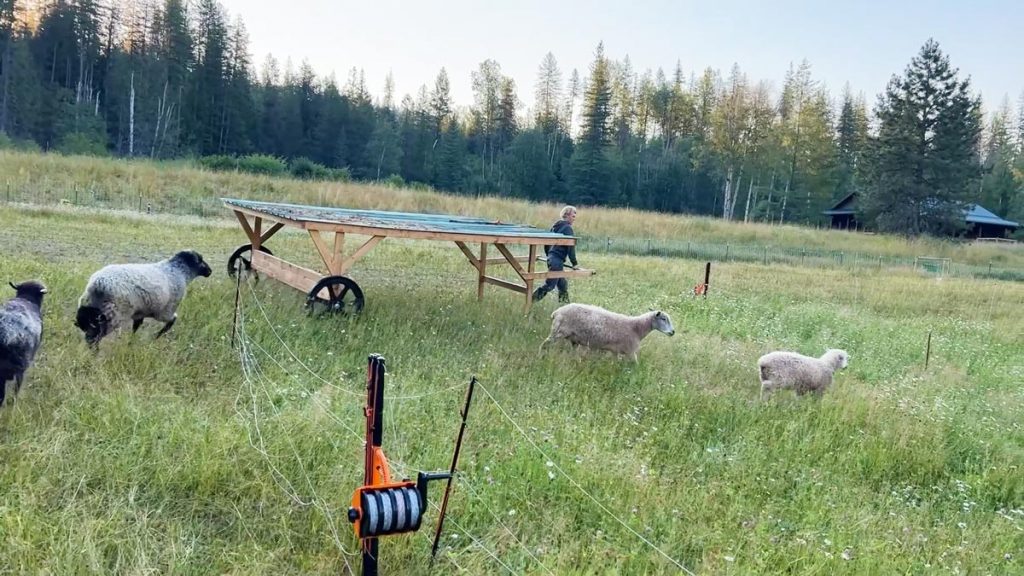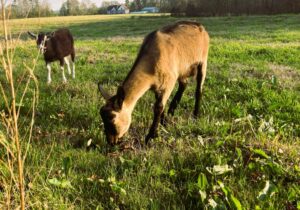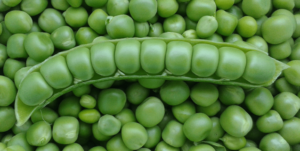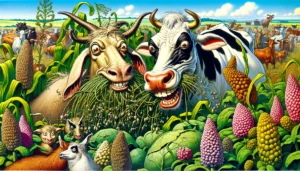
rotational grazing.jpg

Rotational Grazing
Definition:
Rotational grazing is a method of managing livestock grazing activities by periodically moving animals between different paddocks or pastures within a grazing system. This rotational approach aims to optimize forage utilization, improve pasture productivity, and enhance soil health by mimicking natural grazing patterns and allowing vegetation to recover between grazing periods.
Principles of Rotational Grazing:
- Grazing Rotation: Livestock are systematically rotated between designated grazing areas, or paddocks, on a scheduled basis, allowing each paddock to rest and regenerate while others are being grazed. Rotational schedules may vary based on factors such as forage growth rates, stocking densities, and seasonal conditions.Evidence: Research published in the Journal of Range Management demonstrates that rotational grazing systems can improve forage availability, nutrient cycling, and plant diversity compared to continuous grazing, resulting in increased livestock carrying capacities and economic returns for producers.
- Rest and Recovery: Rest periods between grazing cycles allow vegetation to recover from grazing pressure, replenish root reserves, and restore plant vigor. Longer rest periods promote grass growth, flowering, and seed production, contributing to pasture resilience and biodiversity conservation.Evidence: Studies conducted by agronomists and range scientists show that rotational grazing systems with extended rest periods exhibit higher rates of plant biomass accumulation, root development, and soil organic matter accumulation, enhancing ecosystem stability and resistance to environmental stressors.
- Mob Grazing: Mob grazing, a form of rotational grazing characterized by high livestock densities and short grazing periods, concentrates animal impact on small areas, promoting intensive forage consumption, nutrient recycling, and soil disturbance. Mob grazing mimics natural herd behavior and promotes rapid vegetation turnover, improving forage quality and soil fertility.Evidence: Observational studies of mob grazing systems in grassland ecosystems demonstrate increased forage utilization, carbon sequestration, and soil aggregation, indicating the potential of intensive rotational grazing practices to enhance ecosystem services and mitigate climate change impacts.
Benefits of Rotational Grazing:
- Improved Pasture Productivity: Rotational grazing enhances forage utilization efficiency, allowing grazed pastures to recover and regrow between grazing cycles. By promoting uniform forage consumption and reducing overgrazing, rotational grazing systems maintain higher levels of pasture productivity and carrying capacity over time.Evidence: Long-term monitoring studies conducted by agricultural researchers demonstrate the positive effects of rotational grazing on pasture productivity, livestock performance, and economic returns, highlighting the potential of grazing management strategies to enhance agricultural sustainability and profitability.
- Enhanced Soil Health: Rotational grazing practices promote soil health by minimizing soil compaction, erosion, and nutrient depletion associated with continuous grazing. Rest periods between grazing cycles allow forage roots to penetrate deeper into the soil, improving water infiltration, nutrient cycling, and soil structure.Evidence: Soil health assessments conducted in rotational grazing systems indicate higher levels of soil organic matter, microbial activity, and aggregate stability compared to continuously grazed pastures, indicating the positive impacts of grazing management on soil fertility and resilience.
- Biodiversity Conservation: Rotational grazing systems support diverse plant communities, wildlife habitats, and ecosystem functions by maintaining heterogeneous vegetation structure and species composition. Grazing rotation enhances habitat diversity, forage availability, and wildlife corridors, promoting ecological resilience and species richness.Evidence: Ecological surveys conducted in rotational grazing landscapes reveal higher levels of plant diversity, pollinator abundance, and bird species richness compared to monoculture pastures, underscoring the role of grazing management in enhancing biodiversity conservation and ecosystem services.
Implementation Considerations:
- Grazing Planning: Effective rotational grazing requires careful planning and monitoring of stocking rates, grazing durations, and rest periods to optimize forage utilization and pasture productivity. Grazing plans should consider seasonal variations, forage growth patterns, and livestock nutritional requirements to ensure sustainable land management practices.Evidence: Grazing management tools such as pasture condition scoring, forage budgeting, and grazing charting help producers assess pasture health, monitor livestock performance, and make informed decisions about grazing rotations and stocking densities, facilitating adaptive management strategies for sustainable grazing systems.
- Infrastructure Development: Rotational grazing systems may require investment in fencing, water infrastructure, and livestock handling facilities to facilitate efficient grazing management and animal movement between paddocks. Well-designed infrastructure improves grazing distribution, minimizes trampling damage, and enhances pasture utilization efficiency.Evidence: Case studies of rotational grazing implementation demonstrate the importance of strategic infrastructure planning and investment in optimizing grazing systems for livestock production, environmental sustainability, and landscape resilience, highlighting the benefits of integrated land management approaches for achieving multiple objectives.
- Stakeholder Engagement: Successful adoption of rotational grazing practices requires collaboration and communication among landowners, livestock producers, conservation organizations, and regulatory agencies. Stakeholder engagement processes facilitate knowledge sharing, conflict resolution, and collective decision-making, fostering social acceptance and support for sustainable grazing initiatives.Evidence: Participatory research projects and community-based grazing initiatives promote stakeholder involvement in grazing management planning, monitoring, and evaluation, enhancing local capacity for adaptive management, innovation, and knowledge exchange, and contributing to the long-term viability of rotational grazing systems.
Conclusion:
Rotational grazing is a sustainable land management practice that offers multiple benefits for pasture productivity, soil health, biodiversity conservation, and livestock welfare. By adopting principles of rotational grazing and implementing effective grazing management strategies, producers can improve forage utilization efficiency, enhance ecosystem resilience, and promote sustainable agricultural production systems. Collaborative approaches involving stakeholders, research institutions, and extension services are essential for supporting the adoption and scaling up of rotational grazing practices to address global challenges such as food security, climate change, and environmental degradation.
Fall off the barn roof and busted your keister? Life on the farm or ranch can be tough on the bum. Need a break? Laugh it off at FarmerCowboy.com, the #1 farm humor site. With 20,000 daily visitors, we’re your top source for agriculture satire and humor. Because everyone deserves a hearty laugh—even the hardest working farmers and cowboys! Join us and turn those long days into fun tales at FarmerCowboy.com.
Originally posted 2015-09-01 20:26:06.
Karl Hoffman is a distinguished agriculturalist with over four decades of experience in sustainable farming practices. He holds a Ph.D. in Agronomy from Cornell University and has made significant contributions as a professor at Iowa State University. Hoffman’s groundbreaking research on integrated pest management and soil health has revolutionized modern agriculture. As a respected farm journalist, his column “Field Notes with Karl Hoffman” and his blog “The Modern Farmer” provide insightful, practical advice to a global audience. Hoffman’s work with the USDA and the United Nations FAO has enhanced food security worldwide. His awards include the USDA’s Distinguished Service Award and the World Food Prize, reflecting his profound impact on agriculture and sustainability.






